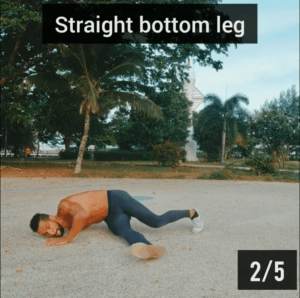.
Adjusting the challenge of an exercise, making it harder or easier to perform/understand, can be done by changing the environment in which it is performed. It’s gold when you create physical constraints that guide the movement without having to say a word. You either do it right or not and you get objective feedback along the way (in my case either I stay on or fall off the board).
.
Creating a movement environment that reinforces what you want without having to say a word also drives engagement. You have to be all in on what you are doing. This can help improve learning and retention of the movement skill, allowing you to repeat it.
.
My examples of environmental design use a simple set of 2×4’s to increase the focus and challenge of three movements I can do relatively easily; beast crawl, half kneel halo, and split squat/lunge. The board forces a narrower base, giving clear guidance on either how I need to move or what my position should be. I slow down, I become more focused, and have to work against the new forces created by the constraints (being in a narrow stance).
.
Another great example that’s often used to make something easier, squats with heels elevated. Elevating the heels means you have to adjust your balance point with a reflexive weight shift and less ROM required at the ankle
.
#wethrivefit #movewithfms #firstprinciplesofmovement #garagegym #environment #constraints @ Playa Del Rey, California




